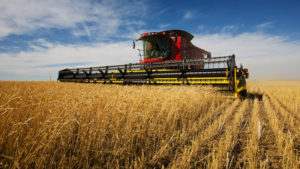Home » Commentary » Opinion » Farm finance ripe for disruption
· Ideas@TheCentre

The banking royal commission placed the spotlight on the tricky relationship between banks and farmers. As a result of their lending behaviour, Australia’s banks — responsible for a portfolio of $60 billion of agricultural loans — were accused of being unethical and lacking empathy.
For someone who grew up on a property in country New South Wales during the height of the Millennium drought, this sentiment came as little surprise. For generations, farming communities have viewed ‘the Bank’ with trepidation and fear. Every farmer has a story about an unsolicited knock on the door or the dreaded annual visit of a bank manager.
While the testimonies presented to the commission have brought the human toll of this situation to light, they could also have a significant market impact in the years to come.
The Australian agricultural financing sector has been dominated by the big banks for decades. However, what we have seen with the royal commission is a clear opportunity for new players to provide the more flexible loan products that are clearly in demand for consumers.
Such market disruption has so far had little traction in Australia. However, across the rest of the world, farmers are looking for alternative ways to access capital.
In the United States, some have turned to crowdfunding, with backers receiving guaranteed delivery of produce in return. Meanwhile in Zimbabwe, scarce access to capital has seen small farmers driven to international investors who commit funds to short and medium term cyclical products such as vegetable crops or poultry.
There are signs that alternative models could work in Australia. A crowdfunded consortium received expressions of interest from 4000 investors committing $70 million in capital in a bid to purchase former Kidman & Co cattle stations in 2016.
While the group were ultimately outbid, similar ventures could be used to stimulate smaller scale investments in portions of farms — such as the leasing of equipment, or a herd of cattle.
Ultimately it will be up to the consumers — Australia’s farmers — to decide if these avenues are more attractive than the status quo. If the royal commission stories are anything to go by, there will definitely be some willing to give it a crack.
Farm finance ripe for disruption